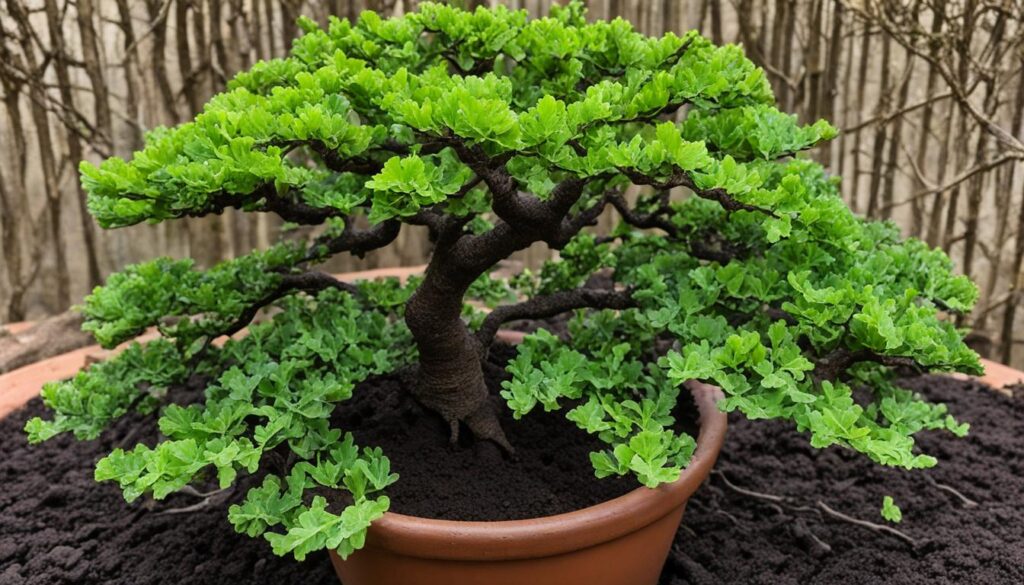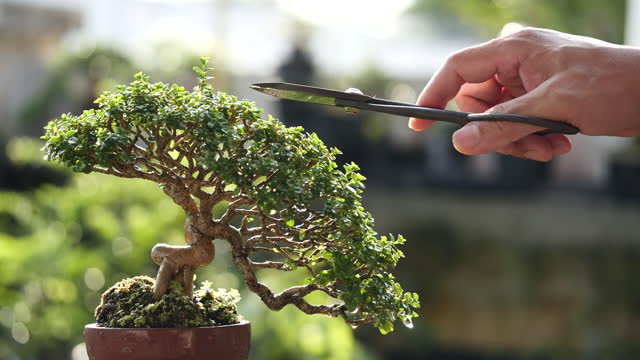In this guide, we will provide you with expert advice and practical tips to ensure the health and vitality of your oak bonsai tree. Whether you’re a beginner or an experienced bonsai enthusiast, you’ll find valuable information on every aspect of oak bonsai care.
From understanding the unique aspects of oak bonsai cultivation to creating the optimal environment for your tree, we’ll cover it all. You’ll learn the art of watering your oak bonsai, mastering fertilization techniques, and the importance of pruning and shaping to maintain its desired form and beauty.
Let’s dive in and discover the secrets of growing and caring for these magnificent miniature trees!
Understanding the Unique Aspects of Oak Bonsai Cultivation
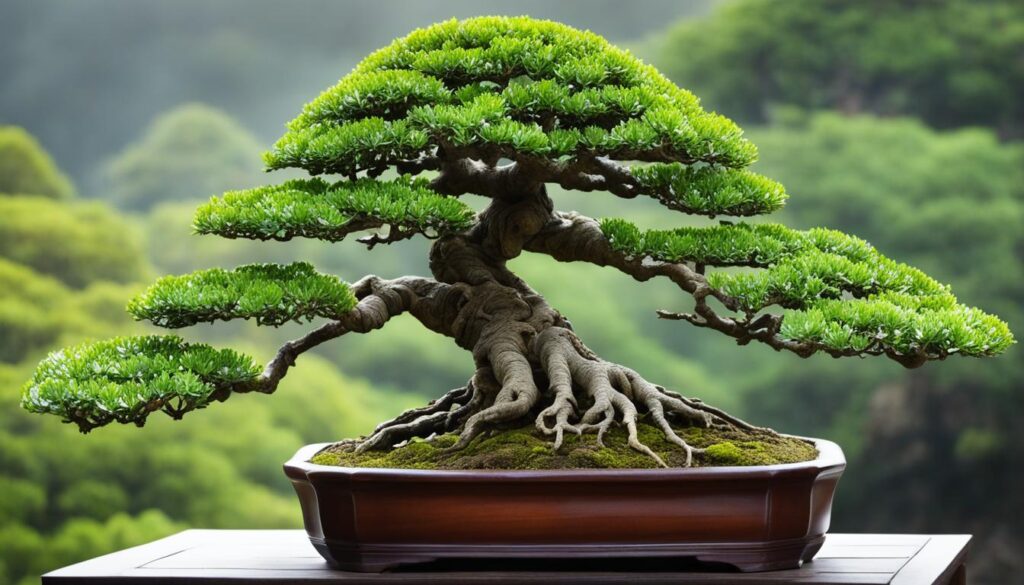
When it comes to oak bonsai cultivation, selecting the right species is crucial. Each species has its own requirements and challenges. Some species are better suited for specific climates, while others may require more maintenance or specific care techniques.
To choose the right species for your needs, consider factors such as your climate, available growing space, and personal preferences. You may prefer a certain leaf size or a particular growth pattern. By carefully selecting the right ospecies, you can ensure a healthier and more successful bonsai tree.
While cultivation can present challenges, the rewards are well worth it. The unique beauty and presence of oak bonsai trees make them a captivating addition to any collection.
Creating the Optimal Environment for Your Oak Bonsai
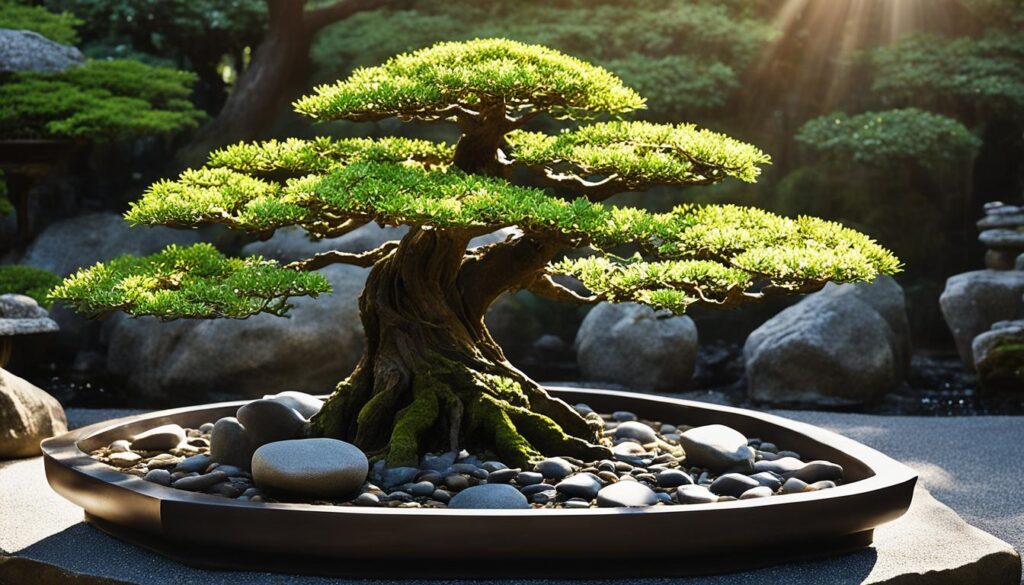
Creating the perfect environment for your oak bonsai is paramount to ensuring its health and growth. The unique nature of these trees necessitates specific considerations for placement, sunlight requirements, and protection from harsh weather conditions.
To provide your plant with an optimal environment, it is crucial to strike a balance between sunlight exposure and shade. While they thrive in well-lit areas, they should be protected from excessive direct sunlight, especially during the hottest hours of the day.
Pro Tip: Place your oak bonsai in an area where it receives morning sun, but is shaded during the intense afternoon heat. This will help prevent leaf scorching and maintain optimal photosynthesis.
In addition, it is crucial to shield your plant from extreme temperatures, frost, and strong winds, as these can cause damage to its delicate foliage and overall health. Consider using protective measures such as translucent covers during harsh weather conditions to protect your bonsai tree.
Pro Tip: During winter, if freezing temperatures are expected, move your oak bonsai to a sheltered location, such as a garage or greenhouse, to avoid frost damage.
By providing the optimal environment for your plant, you can ensure its longevity and create a nurturing space for it to thrive. Remember to regularly evaluate the placement, sunlight exposure, and protection of your bonsai to adapt to changing seasons and weather conditions.
Mastering the Art of Watering Your Oak Bonsai
Proper watering is vital for the health and survival of your oak bonsai tree. In this section, we will guide you through the art of watering your bonsai, including determining the right watering frequency, understanding the moisture needs of the tree, and avoiding common watering mistakes. Whether it’s during the growing season or in winter, you will gain the knowledge and skills to keep your oak bonsai properly hydrated.
Watering bonsai trees, including oak bonsai, can be a delicate balance. Overwatering can lead to root rot and other issues, while underwatering can cause the tree to wither and die. Here are some techniques to help you master the art of watering your oak bonsai:
- Check for Moisture: Before watering your oak bonsai, check the moisture of the soil by inserting a wooden chopstick or your finger into the soil. If it comes out dry, it’s time to water.
- Watering Frequency: The frequency of watering depends on various factors such as climate, season, and the size of your bonsai pot. As a general rule, water your oak bonsai when the top inch of soil feels slightly dry.
- Watering Technique: When watering your oak bonsai, use a gentle and even stream of water. Avoid using a strong jet of water that can dislodge the soil or damage the delicate roots. Water thoroughly until water comes out of the drainage holes at the bottom of the pot.
- Moisture Retention: To help retain moisture in the soil, you can place a layer of organic mulch, such as moss or bark, on top of the soil surface. This will help prevent evaporation and keep your oak bonsai hydrated for longer periods.
- Winter Watering: During winter, when your oak bonsai goes into dormancy, reduce the watering frequency—only water when the soil surface feels dry to the touch. Be careful not to let the soil dry out completely.
“Remember, every oak bonsai has unique watering needs, so it’s important to observe and adjust your watering routine based on the specific requirements of your tree.”
By following these watering techniques and closely monitoring the moisture needs of your oak bonsai, you will be able to maintain a healthy and thriving tree. Adequate hydration is key to the overall well-being of your oak bonsai, ensuring its beauty and longevity for years to come.
Oak Bonsai Fertilization: Timing and Techniques
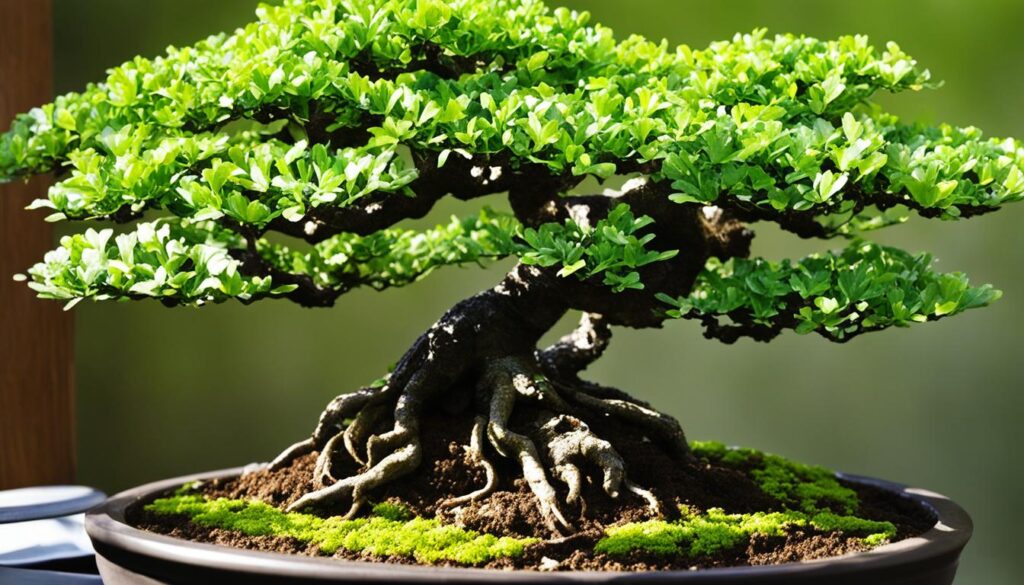
Proper fertilization is key to ensuring the health and vigor of your bonsai tree. By supplying the right nutrients at the right time, you can promote healthy growth and vibrant foliage. In this section, we will discuss the optimal timing for fertilizing your bonsai, as well as the various techniques you can use to achieve the best results.
Timing of Fertilizing Oak Bonsai:
Timing is crucial when it comes to fertilizing oak bonsai trees. Here are some guidelines to help you determine the best time to apply fertilizer:
- Early Spring: During the start of the growing season, as the buds begin to swell, it is a good time to apply a balanced slow-release fertilizer. This will provide the necessary nutrients to support new growth and overall plant health.
- Mid-Spring: As the leaves start to emerge, you can switch to a fertilizer with a higher nitrogen content. Nitrogen promotes foliage development and helps achieve lush greenery.
- Early Summer: In early summer, when the bonsai is in its active growth phase, you can continue using a balanced fertilizer. Make sure to follow the manufacturer’s instructions for application rates and frequency.
- Late Summer: Towards the end of summer, you can reduce the amount of fertilizer applied. This will help the tree prepare for dormancy without excessive shoot elongation.
Fertilization Techniques for Oak Bonsai:
When it comes to fertilizing oak bonsai, there are several techniques you can utilize:
- Solid Organic Fertilizers: These are slow-release fertilizers that provide a steady supply of nutrients over an extended period. They are commonly available in pellet or granular forms and can be applied by sprinkling them on the soil surface around the base of the tree.
- Liquid Fertilizers: These are fast-acting fertilizers that are dissolved in water and applied to the bonsai’s soil. The roots quickly absorb them and provide an immediate nutrient boost. Liquid fertilizers can be applied during the growing season as a supplement to solid organic fertilizers.
It is important to note that over-fertilization can be detrimental to the health of your plant. Always follow the recommended application rates and frequency specified by the fertilizer manufacturer. Regularly monitor the health of your bonsai and adjust your fertilization routine accordingly.
Pruning and Shaping Your Oak Bonsai Tree
Pruning and shaping are essential practices to maintain the desired form and aesthetics of your tree. By properly pruning your bonsai, you can control its size, improve branch structure, and enhance its overall appearance. In this section, we will provide you with step-by-step guidance on how and when to prune your bonsai, as well as techniques for reducing leaf size and controlling branch growth.
When it comes to pruning your oak bonsai, it’s crucial to understand the different types of cuts. These include:
- Pinching: This method involves using your fingers or bonsai shears to pinch off the new growth, promoting the development of smaller leaves and denser foliage.
- Thinning: Thinning is done by removing selected branches or foliage to improve light penetration and airflow within the tree, reducing the risk of disease and promoting healthy growth.
- Heading: Heading cuts involve removing a portion of a branch, stimulating new growth in a specific direction, and encouraging ramification, a branching pattern that creates the characteristic look of a mature bonsai.
It is recommended to prune your tree during its dormant season, typically in late winter or early spring before new buds start to emerge. This timing ensures that the tree can heal quickly and minimize stress on the tree.
Shaping your plant is an art form that requires patience and a keen eye for aesthetics. Wiring is a common technique used to shape bonsai trees. By wrapping copper or aluminum wire around the branches, you can guide their growth and create the desired structure. However, it’s important to monitor the wire regularly to prevent it from cutting into the bark as the branches thicken.
When shaping your plant, consider the tree’s natural growth pattern and mimic it in the design. Aim for a balance between the visual weight of the branches, ensuring that no section of the tree appears top-heavy or unbalanced.
Remember that shaping your bonsai is an ongoing process. Regular pruning and wiring will help maintain the desired form and encourage new growth. With practice and careful observation, you can develop your skills and create a visually captivating oak bonsai tree that showcases the unique characteristics of this species.
“Pruning and shaping are essential practices in bonsai cultivation, allowing you to sculpt your oak bonsai into a miniature work of art.”
| Pruning and Shaping Techniques for Oak Bonsai | Method |
|---|---|
| Pinching | Using your fingers or bonsai shears to pinch off new growth, promoting smaller leaves and denser foliage. |
| Thinning | Removing selected branches or foliage to improve light penetration and airflow within the tree, promoting healthy growth. |
| Heading | Removing a portion of a branch to stimulate new growth in a specific direction and encourage branching patterns. |
| Wiring | Wrapping copper or aluminum wire around branches to guide their growth and create the desired structure. Monitor the wire regularly. |
Propagation and Long-Term Care of Oak Bonsai
Propagation and long-term care are key aspects when it comes to cultivating beautiful oak bonsai trees. This final section will discuss effective propagation methods specifically tailored for oak bonsai. You will learn about seed propagation and techniques such as cuttings and air layers that can be used to propagate your plant successfully.
Additionally, we will address common pests and diseases that can impact them. Identifying these issues is crucial for maintaining the health and vitality of your tree. We will guide how to recognize the signs of pests and diseases and offer preventive measures to keep your plant protected.
By incorporating the tips and techniques outlined in this guide, you will be equipped to provide the best care for your tree. Whether it’s through proper propagation methods or effectively managing pest and disease challenges, you will ensure the long-term well-being and beauty of your tree for years to come.

Karen Phillips, Bonsai expert and blogger. Read more about me here

